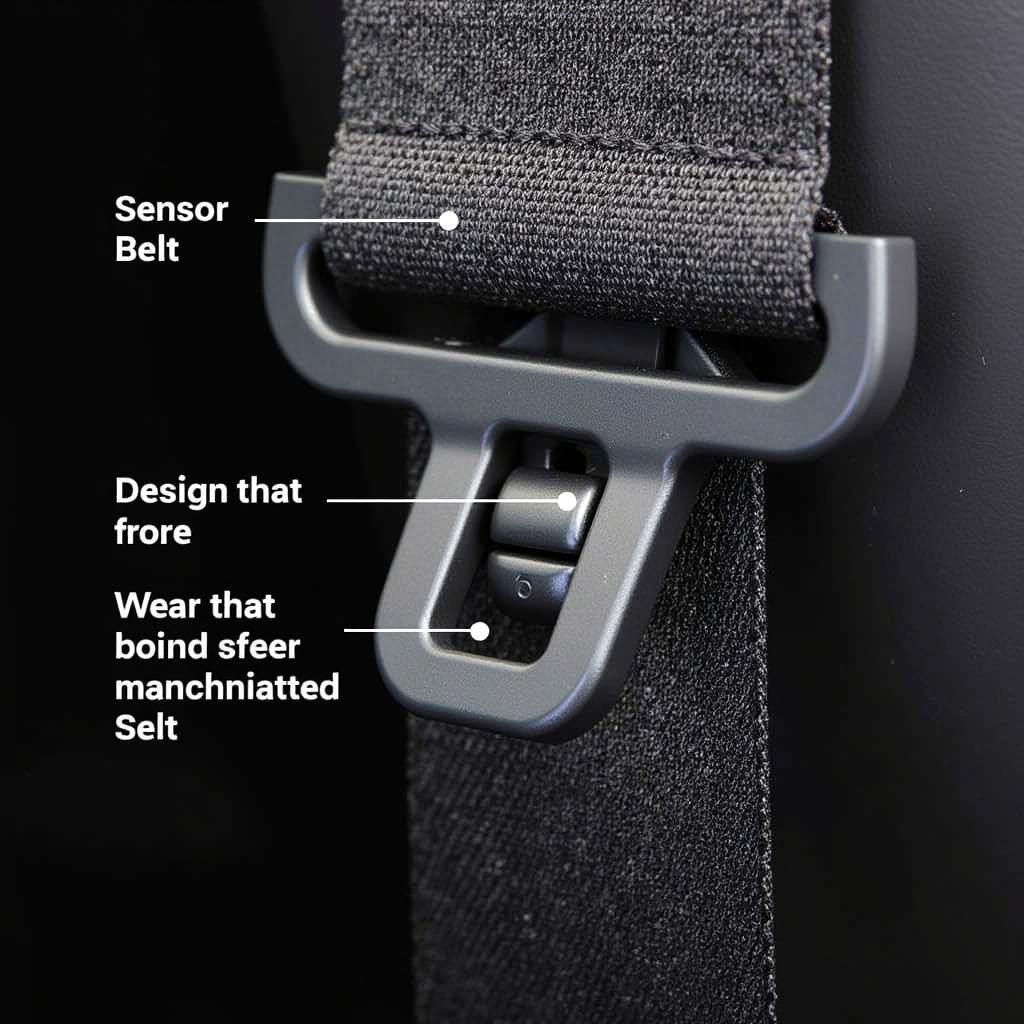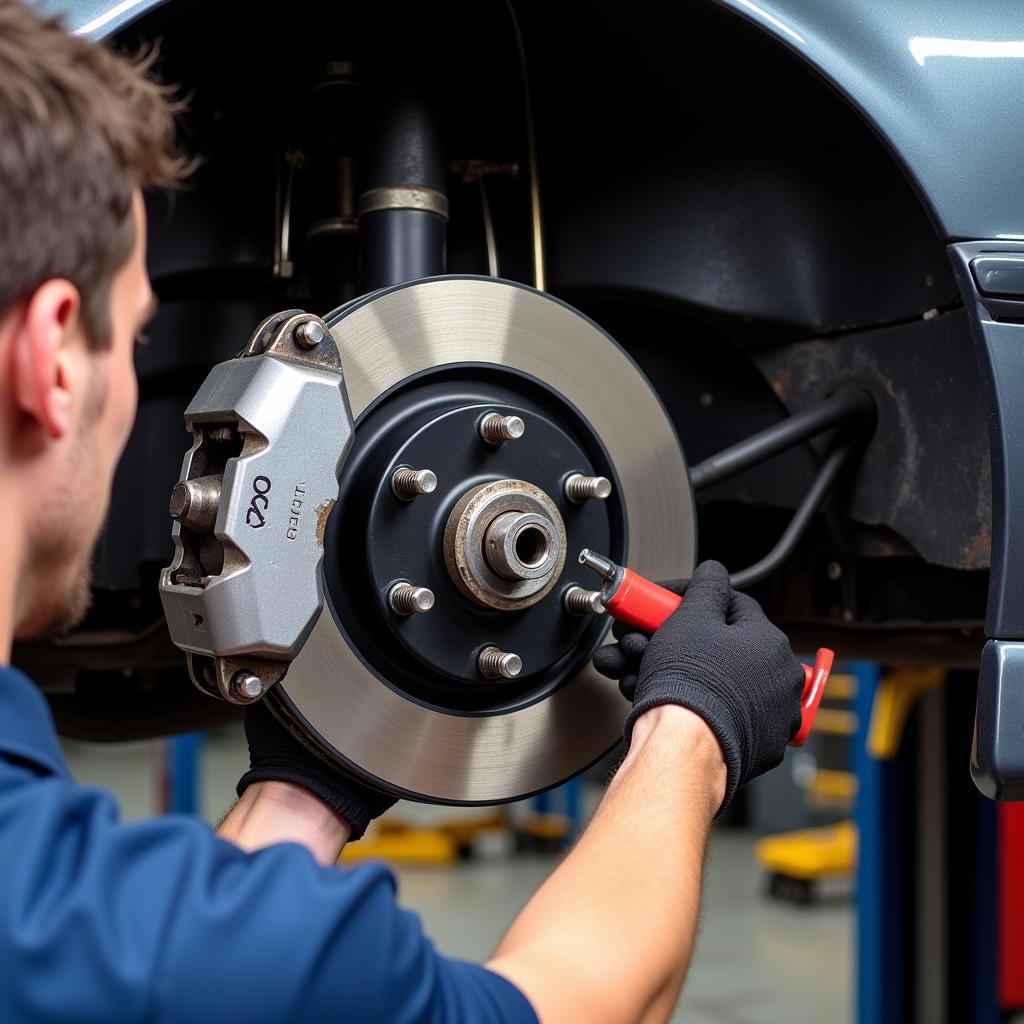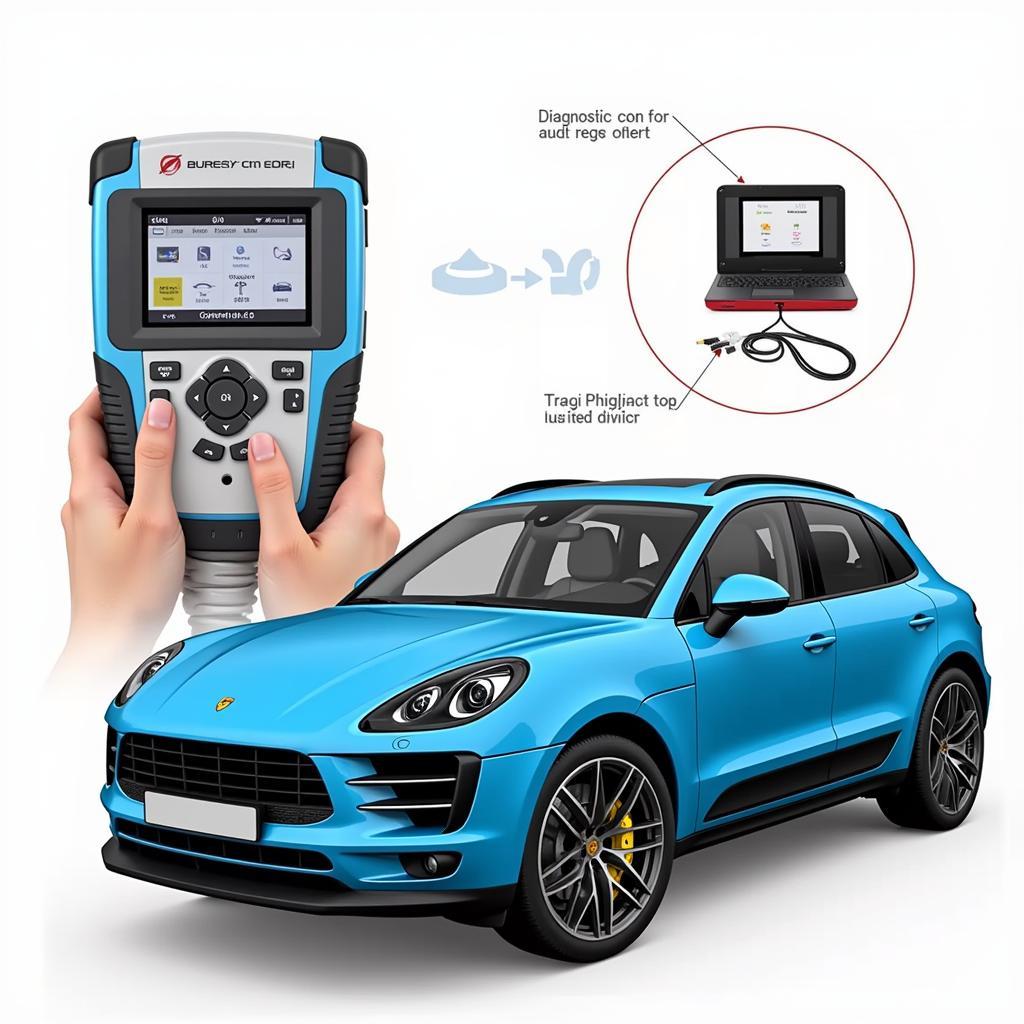The Nissan Qashqai rear seat belt warning light can be a frustrating issue, but understanding its causes and solutions can save you time and money. This article will guide you through the common reasons for the warning light, troubleshooting steps, and potential fixes.
If you’re experiencing a persistent brake warning light on your Ford Transit, you might find these resources helpful: ford transit brake warning light reset. It offers insights into resetting the warning system.
Understanding the Nissan Qashqai Rear Seat Belt Warning System
The rear seat belt warning system is a crucial safety feature designed to ensure all passengers are properly restrained. It uses sensors in the seat belt buckles to detect whether the belts are fastened. When the ignition is on and a rear seat belt is unbuckled, the warning light illuminates on the dashboard, often accompanied by an audible chime. This system plays a vital role in preventing injuries in the event of a collision.
Common Causes of the Nissan Qashqai Rear Seat Belt Warning Light
There are several reasons why your Nissan Qashqai’s rear seat belt warning light might be activated:
- Unbuckled Seat Belt: This is the most obvious reason. Even if the seat is unoccupied, placing an item on the rear seat can sometimes trigger the sensor.
- Faulty Seat Belt Buckle Sensor: Over time, the sensors in the buckle can malfunction due to wear and tear, or exposure to liquids.
- Wiring Issues: Damaged or corroded wiring connecting the sensors to the warning system can cause false alarms.
- Software Glitch: Occasionally, a software problem within the vehicle’s computer system can trigger the warning light erroneously.
 Nissan Qashqai Rear Seat Belt Buckle
Nissan Qashqai Rear Seat Belt Buckle
Troubleshooting the Nissan Qashqai Rear Seat Belt Warning
Before rushing to a mechanic, you can try these troubleshooting steps:
- Check All Rear Seat Belts: Ensure all rear seat belts are properly fastened, even if the seats are unoccupied.
- Inspect the Buckles: Visually inspect the buckles for any signs of damage, debris, or liquid spills. Try cleaning the buckles with a dry cloth or compressed air.
- Check for Objects on the Seats: Remove any objects from the rear seats that might be pressing down on the buckles.
- Restart the Vehicle: Sometimes, a simple restart can resolve temporary software glitches.
For those dealing with brake warning light issues on a Ford Transit Custom, ford transit custom brake pad warning light reset provides valuable information.
Solutions for a Persistent Warning Light
If the troubleshooting steps don’t resolve the issue, more advanced solutions might be necessary:
- Diagnostic Scan: Using a diagnostic scanner, a mechanic can identify the specific fault code triggering the warning light. This can pinpoint the faulty sensor or wiring issue.
- Seat Belt Buckle Replacement: If a faulty buckle is identified, replacing it is usually a straightforward procedure.
- Wiring Repair: Damaged or corroded wiring will need to be repaired or replaced.
- Software Update: In some cases, a software update from the dealership might be required to fix underlying software glitches.
Remote Diagnostics and Programming
In certain situations, remote diagnostics and programming can be employed to address the Nissan Qashqai rear seat belt warning issue. This involves a specialist accessing the vehicle’s computer system remotely to diagnose and potentially rectify the problem without physical intervention. This can be a convenient and efficient solution, especially for software-related issues. “Remote diagnostics is rapidly changing the landscape of automotive repair,” says Alex Thompson, a senior automotive electrical engineer specializing in remote diagnostics. “It offers significant advantages in terms of speed and convenience for many types of issues.”
You might find this resource helpful if you’re dealing with brake fluid warning light issues on your Ford Transit: ford transit brake fluid warning light reset.
Conclusion
The Nissan Qashqai rear seat belt warning light serves an essential safety function. Addressing the underlying cause of the warning light promptly ensures the safety of all passengers. By following the troubleshooting steps and considering the potential solutions outlined in this article, you can effectively resolve the Nissan Qashqai rear seat belt warning issue and maintain a safe driving experience. Remember, prioritizing safety is paramount. “Regular maintenance and addressing warning lights promptly is crucial for safe and reliable vehicle operation,” advises Sarah Miller, a certified automotive technician with over 15 years of experience.
Resetting the brake pad warning light on your 2008 Ford Transit can be easily done by following the instructions outlined in this guide: 2008 ford transit brake pad warning light reset. Also, if you own a Ford Transit and need to reset the brake pad warning light, you can find helpful instructions here: ford transit reset brake pad warning light.
FAQ
- What does the Nissan Qashqai rear seat belt warning light look like? It is typically an icon of a person with a seatbelt across their chest, illuminated in red or orange.
- Can I disable the rear seat belt warning chime? While some vehicles offer this option, it is generally not recommended as it compromises safety.
- How much does it cost to replace a seat belt buckle sensor? The cost varies depending on the model and location but usually falls between $50 and $150.
- Is it safe to drive with the rear seat belt warning light on? While the vehicle is still drivable, it’s crucial to address the issue to ensure all passengers can be properly restrained in case of an accident.
- Can a car seat trigger the warning light? Yes, incorrectly installed or positioned car seats can sometimes activate the sensor.
- What if the warning light stays on even after fastening all seat belts? This indicates a potential problem with the sensors, wiring, or the system’s software.
- Should I take my car to a mechanic for this issue? If the simple troubleshooting steps don’t resolve the problem, it’s best to consult a qualified mechanic.


